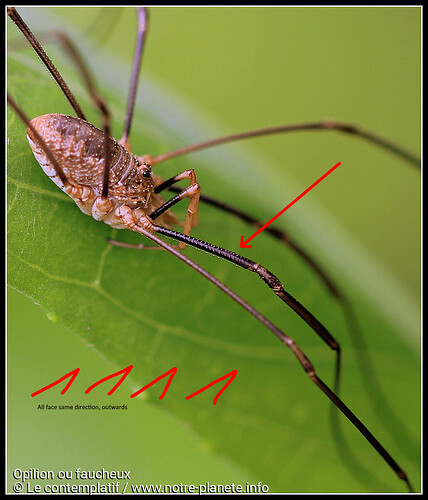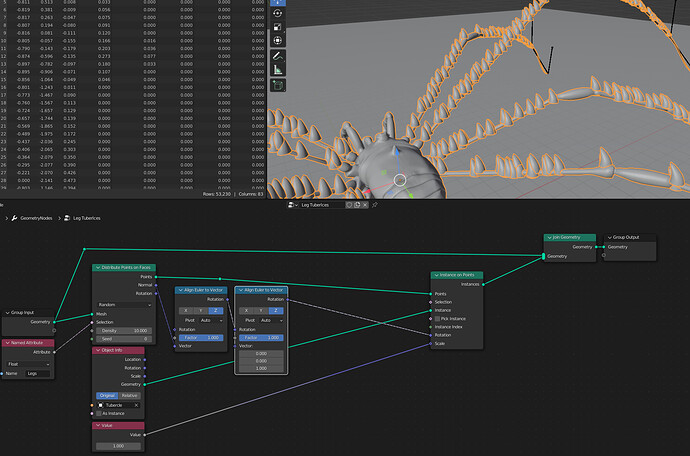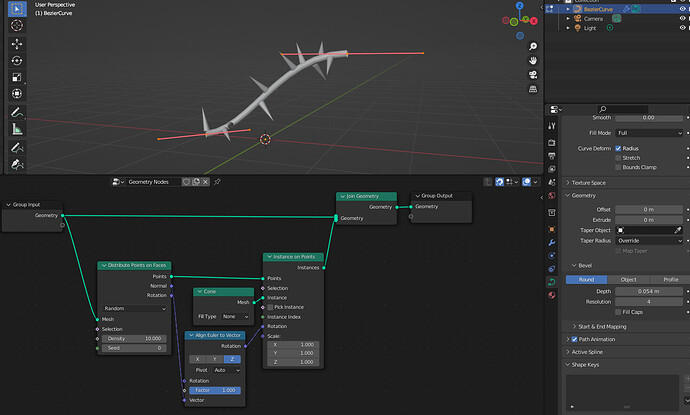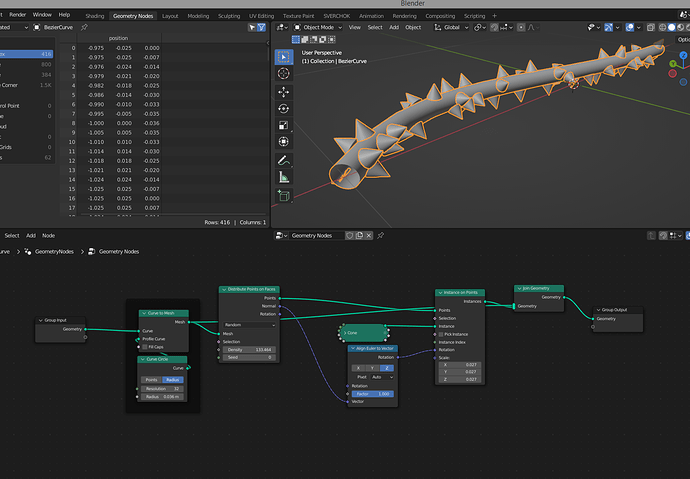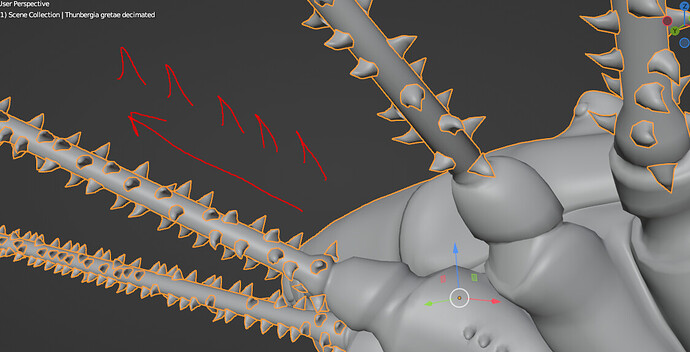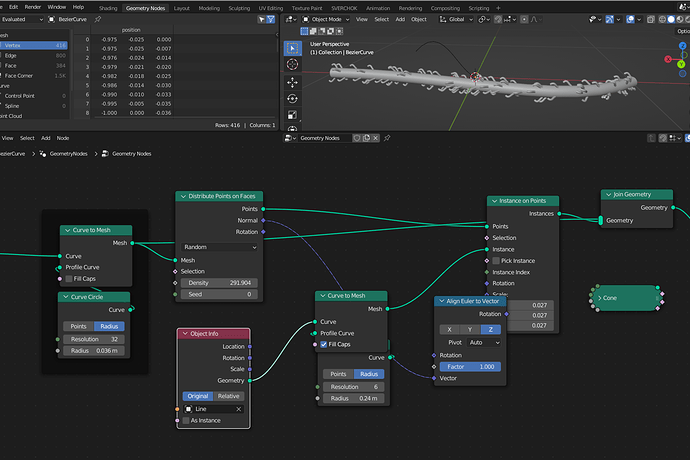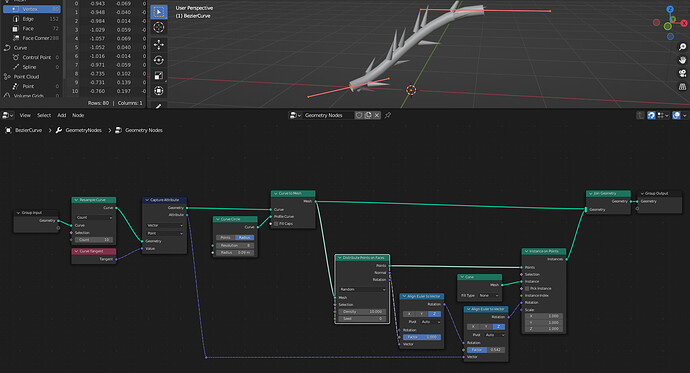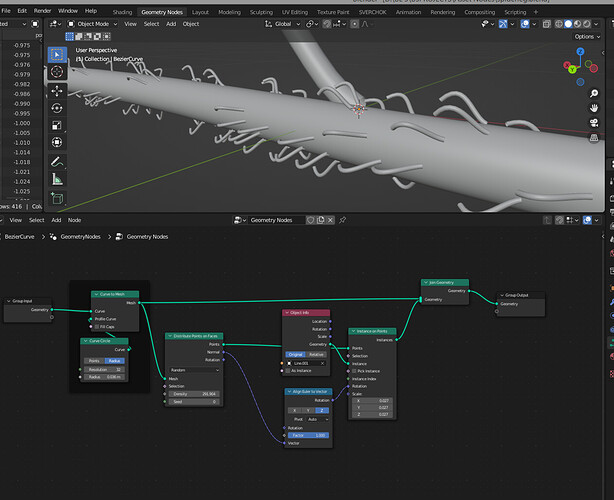Hello.
Does anyone have ideas on how to rotate instances so they all face the same direction, after they have been rotated to follow normals?
I’m trying to replicate this sort of ornamentation on the leg of this harvestman:
Spines are arranged in rows on leg segments, facing outwards - but all tips point the same direction, a bit like a cheese grater.
I’ve tried all sorts of Align to Euler configurations (one, two, different XYZ rotation axes, etc.) but I can’t seem to control the rotation of instances the way I want. You’d think it would be easy to align them to normals and then rotate via Z axis.
Assuming you have geometry already (Using Round Bevel here), you just need to align once:
Good luck!
1 Like
Beaten to it by @zeroskilz !
1 Like
Thanks both, but this only aligns around the cylinder - it doesn’t allow you to rotate the instances so that tip points face the same direction along each segment of the leg.
E.g

Perhaps more obvious with these meshes - they all point different directions, which is not visible with cones.
The base of each spine does align to the cylinder faces, maybe a better way of phrasing it would be to ask “how to do I now rotate each aligned instance around their local Z axis so they face the same direction along each leg segment?”
something like this then?
You’ll have to use Curve-To-Mesh and capture the cure Tangent…
Like So:
Good luck!
I think the problem is that this seems to work for instancing on curves, but not when you are instancing to an existing mesh. Or perhaps I am missing something obvious?
OK, now my nodules are now a mesh,same result, the curve is a mesh as otherwise distribute point on face would not work…
Ok, your leg is a mesh already, yeah, I think making these part with curves intially (earlier on in your geonodes setup ) would work.
You could always use an (invisible) curve just for the instancing and not pass it out as geo?
1 Like
It’s very odd, but in the end I decided to just use a different instance that was not so reliant on direction. Looking at other harvestmen in the same group, it seems they don’t often have very sharp leg denticles (these little teeth).
